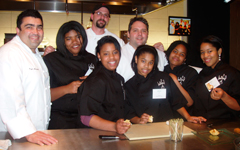Ugly is Trendy
You have twenty seconds to brainstorm three ideas for how to use your super brown bananas that are starting to attract fruit flies: GO!
(20 seconds later)
Here’s my list (I really timed it, and honestly, whether you believe me or not, I did ask myself that question pretty spontaneously. Originally I was going to use a different fruit, but then my brain did a last-minute switch-up, which probably evened up the playing field between us a little).
- banana bread
- banana ice cream
- compost
- vermicompost!
- teeth whitening
- shine your shoes
None of these are a joke! Look it up. Vermicompost is composting with worms, and boy do they love brown mushy banana peels chopped up into little pieces. And finished worm castings (the end product of vermicompost) can sell for a pretty penny. Yes I did over-achieve by adding more than three ideas, but don’t let me limit you with my small asks! Pinterest is a good place to start for more quirky banana and banana peel ideas.
Anyway, back to the worms. For Stephane Martinez, president of Moulinot Compost and Biogas, vermicompost was the first step in creating the small Parisian company that helps restaurants and businesses in Paris meet new national standards for food waste. Although worm compost is the “most beautiful you have in the world,” Moulinot uses biogas digesters to handle a wider range of food waste and generate electricity. Each day, Moulinot picks up food waste from restaurants, schools and a farmer’s market from all over Paris to send 6 tons of waste daily to a biogas plant. How much energy does biogas really produce? Just the food waste produced in preparing a meal, plus the uneaten leftovers, will supply a laptop with enough energy for more than two hours (Baragona).
Getting creative to reduce food waste is getting pretty dang trendy. Germany already has 8,000 biogas digesters (Baragona). Local business Misfit Juicery has capitalized on the “ugly fruit and vegetable movement” to make delicious cold-pressed juices from otherwise aesthetically displeasing produce. Dumpster diving is gaining momentum as a politicized act of rebellion against a problematic food system with the help of documentaries like Just Eat It. Through Food Recovery Network, college students are leading nation-wide food recovery programs on their campuses, redirecting perishable food that would otherwise be wasted to community partners like food banks and homeless shelters. Compost Cab collects food scraps to compost from city residents for a small fee. DPR’s Community Compost Cooperatives offer residents interested in getting their hands dirty a hands-on, collectively-managed composting option at over twenty (and growing!) locations around the city. And our very own Community MVPs have taken a keen interest in food waste issues: they gave their first workshop, themed “Waste Not: Making the Most of Your Food,” earlier this month as part of Union Market's Test Kitchen workshop series.
Food recovery is especially important to consider this time of year, when overindulgence and food excess is abundant, and the spirit of giving permeates the season. In the US, we currently waste more than 40% of our food. Whether we buy too much and it spoils in the fridge, or we can’t harvest all of our fields’ abundance because fruit and leaves have imperfections, we are now wasting 50% more food than Americans in the 1970s. If we could reduce our food waste as a country by just 15%, we could feed 25 million Americans. A sobering thought considering that 1 in 6 Americans is food insecure (Gunders 1).
At Brainfood, food waste is an issue close to our heart. All our classes are on a tight budget, our garden produce is preciously local and fresh, and our compost is essential for budget-friendly healthy garden soil. So we’ve developed some best practices for minimizing food waste that are easily applicable to any kitchen:
- batch out recipes for class to make sure there is enough for every student, volunteer and staff to get one serving - this allows us to cross-check kitchen supplies before shopping so we buy only what we need, and regularly look at kitchen supplies
- staff processing Tuesdays - every Tuesday, the garden manager and at least one staffer work together to process and preserve fresh produce from the garden for future use in programs
- we always pack up leftovers from class for students or volunteers to take home
- we share unique ingredients across sites, such as frozen naan, to stretch our creativity and make sure everything gets used!
- we compost our food scraps, diverting waste from landfills
- our program staffers and Homegrown team check in about leftover produce from the weekend market to incorporate into classes and delicious new Homegrown snacks
Ugly is trendy. Food waste is not. Take advantage of the holiday season and family time to use those wilted greens in your fridge for a new pesto recipe, or the leftover garlic and onion peels as the base of a veggie broth to season your New Years’ black-eyed peas. Get creative!
References
Baragona, Steve. "Food Waste From Paris Climate Summit Turned Into Power." Voice of America, 4 Dec. 2015. Web. 21 Dec. 2015.
Gunders, Dana. "Wasted: How America Is Losing Up to 40 Percent of Its Food From Farm to Fork to Landfill." NRDC Issue Paper (2012): n. pag. National Resources Defense Council, Aug. 2012. Web. 21 Dec. 2015.







Comments
Post new comment